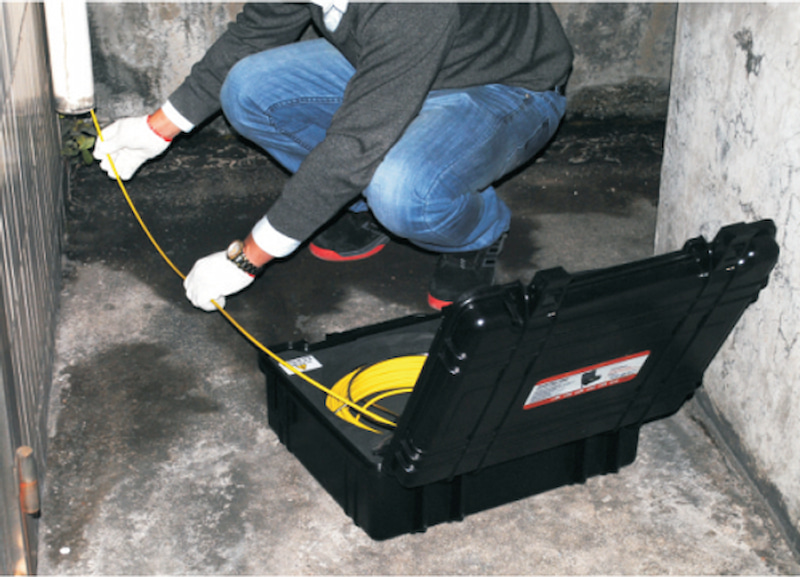
Inspection Cameras: Factors to Consider When Choosing the Ideal Camera
Pipe inspection cameras are one of the most important investments for people working in the plumbing and drain cleaning industries. The right camera can make the job easier, make you more productive and bolster your bottom line. However, settling for the right camera can be quite the task. With so many types and models available nowadays, you’ll want peace of mind knowing your hard-earned money is invested in the right product, especially if you’re self-employed.
Inspection cameras include different types of cameras, such as digital inspection cameras, snake cameras, and even drones (remote visual inspection tools). Visual inspection cameras are the most commonly used type of pipe camera. However, some inspectors use thermal and other cameras to gather less common data types. All of these cameras help you get the data you need to diagnose and deal with potential defects, or collect data in difficult-to-reach or completely inaccessible areas. This article will focus mainly on the visual inspection pipe camera models, and what you need to pay attention to when choosing one.
Factors to Consider When Choosing an Inspection Camera

Image Quality
The image quality is determined by the type of data your inspections will require. Generally, the higher the image quality, the more expensive the camera will be. Basically, you get what you pay for. More affordable cameras will come with lower resolution images, and more expensive cameras come with higher resolution and image quality. The image quality can determine how many details you can capture while inspecting drainages and pipes.
Lighting
Chances are you’ll be working in poorly lit or indoor locations, so it’s important that the camera you buy has sufficient lighting for the job. Also, consider whether you’ll need additional lighting to get the video or pictures you need. Most cameras are equipped with LED lights that are adjustable, so pay attention to the number of lumens they provide to see how bright the lights are.
Cable Length and Width

This is one of the most important considerations for snake cameras (borescopes). Most cameras have cables that can stretch from 4 metres up to 15 metres, or more. More is not necessarily better, so get a camera with a cable length that’s enough for the jobs you deal with on a daily basis. Moreover, make sure the cable isn’t too wide. If it is, it won’t fit where you need it to. Most of the time, you’ll find narrower cables, although that may not always be the case.
Cost
Of course, the cost of the camera can play a huge role in your decision. Inspection cameras can cost as little as $50 and as much as $3000 and more. The amount you’re willing to spend will depend on your needs and the return on investment you expect from it. If you’re a professional who needs the highest quality imagery or videos, getting a high-end camera will only make sense. On the other hand, if you’re new in the field, you may be more inclined to get a more affordable model until you learn enough about drain or pipe inspecting.
Add-ons

Some cameras come with extra accessories that can make your work easier. Some of the typically used accessories are magnets, hooks and angular attachments or mirrors. Magnets allow you to grab metallic objects with the camera; hooks allow you to grab items during the inspection, and angular attachments and mirrors allow you to see difficult angles to get full coverage. All of these add-ons are quite affordable, yet provide a ton of assistance when performing inspections.
Battery
The last thing to consider when buying pipe inspection cameras is their power source. The majority of cameras will require batteries, but they’re not always included in the deal. That being said, consider the type of batteries the camera is compatible with. Some cameras use AA batteries, while others may require lithium-ion batteries. Make sure you do your due diligence as to what type of batteries your camera uses.
Conclusion
If you google pipe inspection camera, the top results will lead you to believe borescopes and snake cameras are the only two types available. The truth of the matter is, that any camera can be a pipe inspection camera. You can even use a conventional digital camera to collect images of a pipe. On the other hand, an industrial inspector working in huge pressure vessels can use a drone that’s equipped with an RGB camera to collect data. Then, a roof inspector can use a thermal camera to collect data. What makes cameras inspection cameras is how they’re used. That being said, consider your data collecting needs, and once you identify them, you can easily find a suitable camera for the job. After all, cameras are one of the most commonly used tools for inspection. However, sometimes, you may also need to use it in combination with other tools to get the full picture.


